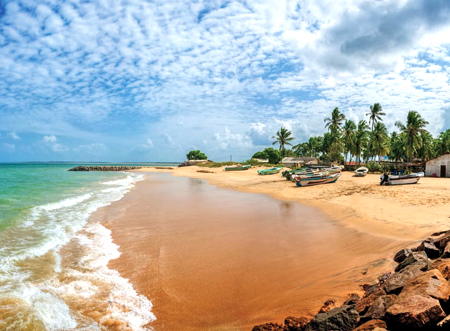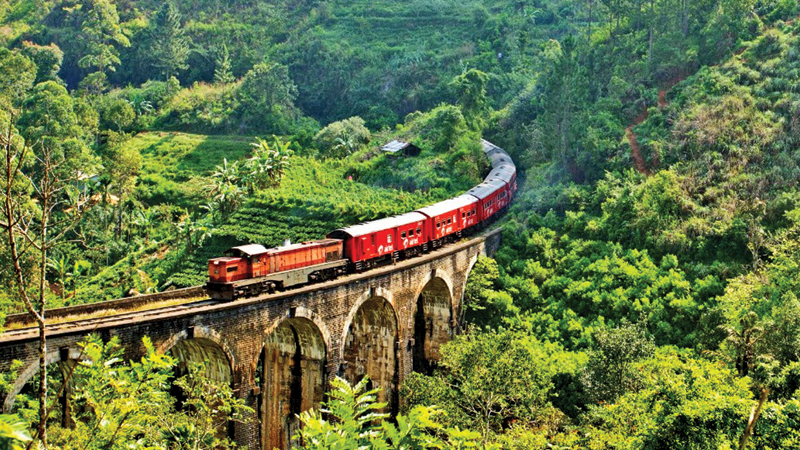Covid-19 sounded the death knell for global tourism back in 2020, with most countries closing their borders. This severely affected countries such as Sri Lanka, Maldives and Thailand which mainly depend on tourism to generate foreign exchange. This, coupled with some other factors, even precipitated a major economic crisis in Sri Lanka. Actually, the crisis for tourism in Sri Lanka began with the 2019 Easter attacks, followed in rapid succession by Covid-19.
In the aftermath of political events and the acute shortage of fuel and lengthy power cuts in 2022, the tourism sector suffered again. These issues have now been addressed to a great extent and tourists are coming in droves as if to make up for lost time.
But with Covid-19 on the wane (though not entirely eliminated), global travellers are back on the move again. This year, global travel is most likely to recover to pre-pandemic (2019) levels. Airlines are re-starting flights that were halted due to Covid-19 – examples include Cathay Pacific and Thai, both of which are re-launching their flights to Colombo.
 And that can only be good news to countries such as Sri Lanka, which has a new promotional tagline: Sri Lanka – You Will Come Back for More. This is important, as the bulk of the visitors to Sri Lanka are repeat customers who are lured to the island every year by its charms. This global campaign will target 11 countries and regions in particular, including six or seven countries whose nationals can now visit Sri Lanka visa-free.
And that can only be good news to countries such as Sri Lanka, which has a new promotional tagline: Sri Lanka – You Will Come Back for More. This is important, as the bulk of the visitors to Sri Lanka are repeat customers who are lured to the island every year by its charms. This global campaign will target 11 countries and regions in particular, including six or seven countries whose nationals can now visit Sri Lanka visa-free.
Long-term goals
Sri Lanka aims to draw 2.3 m tourists and earn over US$ 4 billion in 2024, with long-term goals set for 5 million arrivals and US$ 21.6 billion earnings by 2030. This is not an unattainable goal by any means, as some Asian countries with far fewer attractions get 20 million tourists per year.
Indian External Affairs Minister (EAM) Dr. S. Jaishankar’s advice to Indian travellers to choose Sri Lanka for their holidays will also make a deep impact in our biggest tourism market. In fact, over 35,000 Indians visited Sri Lanka in January this year alone.
Sri Lanka is one of the world’s best-known tourism destinations and is a global hot spot for tourism with publications such as CNN Travel and Lonely Planet declaring Sri Lanka as one of the world’s top spots for travel and discovery. There is also a tendency among travellers to visit countries that emphasise sustainable and development-oriented tourism, which can also benefit Sri Lanka. Tourism is being recognised as a crucial pillar for development, a fact that was highlighted at the United Nations General Assembly special debate on tourism in May 2022.
Sri Lanka has to take these factors into consideration as it maps out a strategy for attracting more tourists from around the world. There is a complaint from tourism services providers that they have not been able to import high quality new vehicles to ferry tourists due to the import ban on vehicles.
New concepts
Since tourist hotels and travel operators earn foreign exchange for the country, it would be prudent to grant them (and also “special tours” bus operators) duty free permits to import brand new electric cars and buses for the transport of tourists on the condition that they also import DC superchargers or solar chargers.
A duty concession can be granted for this as well. This also tallies with the environmental goals envisaged for global tourism. Since it is also important to ensure an adequate supply of food for the tourists in the face of an impending global food crisis, all hotels with arable land must be encouraged to grow crops that can sustain their kitchens.
We can look at other countries which have introduced new concepts such as rooftop and vertical farming as well as hydroponics, the technique of growing crops without soil. Most hotels can easily embrace these concepts. Hotels should also have a more robust relationship with the local farmers and suppliers so that they nurture the local economy.
Air tickets to and from Sri Lanka have become very expensive in recent times, which may also deter tourists from coming here. This issue too has to be resolved to some extent, though there are other global factors too at play here. If these issues can be resolved, more airlines are waiting in the wings to begin services to Colombo and also to increase their frequencies. The authorities should encourage more Indian airlines to use the new Palaly International Airport in Jaffna, given that Indian tourists top tourist arrivals here. Its runway should also be extended to accommodate Boeing 737s and Airbus A320/321 jets, as only turboprops such as ATR 72-600 can land there.
Warm hospitality
 Sri Lankans are known the world over for their warmth, love and hospitality. Most tourists cite our friendly people as one of their main reasons for visiting Sri Lanka. But of late, there have been some incidents that may have harmed this reputation. Things have to start from the BIA itself, where touts often harass tourists for everything from taxi rides to hotel stays. The recent move to grant two ride hailing companies to operate rides from the BIA has severely dented the clandestine operations of rogue taxi owners. Touts, beggars, unlicensed tour guides and brokers harass tourists at all major tourist attractions, which could put off some of them from coming here again. After all, repeat tourists are a big market for Sri Lanka.
Sri Lankans are known the world over for their warmth, love and hospitality. Most tourists cite our friendly people as one of their main reasons for visiting Sri Lanka. But of late, there have been some incidents that may have harmed this reputation. Things have to start from the BIA itself, where touts often harass tourists for everything from taxi rides to hotel stays. The recent move to grant two ride hailing companies to operate rides from the BIA has severely dented the clandestine operations of rogue taxi owners. Touts, beggars, unlicensed tour guides and brokers harass tourists at all major tourist attractions, which could put off some of them from coming here again. After all, repeat tourists are a big market for Sri Lanka.
More needs to be done
Sri Lankan tourism authorities also have to rethink the admissions pricing policy at key tourism attractions, where tourists sometimes have to pay as much as 10 times the rate paid by local tourists. This may adversely affect budget tourists and in today’s context we need every Dollar. It is better to have one “middle of the road” pricing policy for both foreigners and locals. The Lotus Tower, which recently attracted the 50,000th foreign visitor, should be properly marketed abroad to attract more tourists.
It is also vital to have more Tourist Police stations near key attractions and also in the major cities visited by tourists. This way, tourists can get help quickly if they are harassed, fleeced, intimidated or robbed. All the personnel of Tourist Police must be encouraged to learn at least one more language in addition to English, such as French, German, Spanish and Russian. This will help them to communicate more easily with the tourists, some of whom cannot speak English well.
The new international tourism promotional campaign which is to be conducted through traditional and social media globally should highlight our multitude of religious, cultural and natural attractions that are perhaps not found anywhere else on the planet. This campaign should also reassure any “on the fence” tourists that Sri Lanka is a safe destination to visit. More journalists from leading travel publications in our source markets as well as from new markets should be given familiarisation tours here so that they will inform their readers and viewers on the array of attractions here.
This “reset” will also be a good opportunity for travel and tourism planners to analyse shortcomings in the inbound travel industry and take corrective steps.
That will help the industry to realise the initial goal of 2.5 million tourists per year at least after 2024-25, giving a new sense of purpose and direction to the tourism industry, perhaps the most vital cog in the economic wheel in terms of attracting foreign exchange.
Sri Lanka should be in a position to do much better in terms of tourism in 2024-25. Our tourism planners must get ready for this uptick in tourism from now onwards to reap the full benefits. For example, they should work closely with the BIA and Airports and Aviation Sri Lanka (AASL) Limited to get more airlines to fly to Colombo. No major European Airline including British Airways, Air France, Swiss, Lufthansa and KLM is currently flying to Colombo. This should be rectified. India’s Akasa Air is eyeing the start of international operations and the BIA must make sure that Colombo is one of its first destinations. Likewise, in Asia, we should be having flights by Japan Airlines, QANTAS, Vietjet, Biman, Royal Nepal, Korean Air, Asiana, Air Japan etc.
The shortage of hotel rooms must also be addressed. The imminent opening of ITC Ratnadeepa in the heart of Colombo will no doubt attract Indian and other travellers, but we need more high quality hotels (such as the new Hilton Weerawila) in the outstations too. Several travel and architecture magazines recently featured a few top-end hotels in Sri Lanka, which has stirred interest in these properties.
Challenges
The authorities must also address the difficulties faced by the hotel operators such as the high cost of electricity and water. Many medium-scale tourist hotels have shut down, unable to afford the higher charges.
This is not surprising, as Sri Lanka already has the highest electricity tariffs in South Asia. Concessions should be granted to at least the medium sector hotel and guesthouse operators to keep their heads above water.
The tourism industry also has to take into account the challenges posed by Climate Change. In this context, tourism hotels and other providers must try to reduce their Carbon Footprint by adopting more sustainable practices such as using solar panels for electricity generation and rainwater harvesting.
The Government should provide grants and concessions for such initiatives. Plastic use and food waste too must be minimised.
We have to remember that Sri Lanka is not the only pebble on the beach. There are other countries in the region that attract more tourists. Thus we have to identify the unique traits (including Sri Lankan food) and sights that will mesmerise first-time and even repeat visitors and use them to our advantage. If we make an honest effort to do that, getting even three million tourists per year will not be a difficult task.






